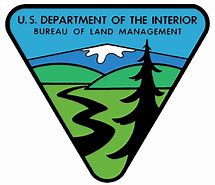Portland, Ore. – Fire restrictions go into effect on May 23 for all Bureau of Land Management public lands throughout Oregon and Washington. The BLM encourages all visitors to be aware of active restrictions and closures as warmer, drier weather sets in around the Pacific Northwest.
Starting May 23, the use of fireworks, exploding targets or metallic targets, steel component ammunition (core or jacket), tracer or incendiary devices, and sky lanterns will be prohibited. These fire restrictions will help reduce the risk of human-caused fires.
“Although we had a wet winter, we must still be careful with activities that can cause a spark to keep our first responders, local communities, and public lands safe from accidental wildfires,” said Anita Bilbao, BLM Oregon/Washington Associate State Director. “We are seeing more invasive grass due to the wet weather, which dries out quickly without rain. Everyone can help by following fire restrictions and practicing fire safety while out on your public lands.”
Those who violate the prohibition can be fined up to $1,000 and/or receive a prison term of up to one year. In addition, those found responsible for starting wildland fires on federal lands can be billed for the cost of fire suppression.
May is also ‘Wildfire Awareness Month’. Visit NIFC.GOV for wildfire prevention tips: https://www.nifc.gov/fire-information/fire-prevention-education-mitigation/wildfire-prevention.
For more information on Bureau of Land Management Oregon/Washington seasonal fire restrictions and fire closures, please see www.blm.gov/orwafire. To learn more about fire careers with BLM Oregon-Washington, please see https://www.blm.gov/programs/public-safety-and-fire/fire/state-info/oregon-washington/careers.
-BLM-
The BLM manages more than 245 million acres of public land located primarily in 12 western states, including Alaska, on behalf of the American people. The BLM also administers 700 million acres of sub-surface mineral estate throughout the nation. Our mission is to sustain the health, diversity, and productivity of America’s public lands for the use and enjoyment of present and future generations.









